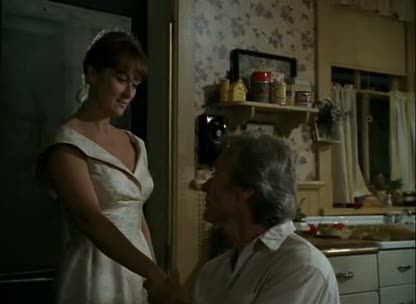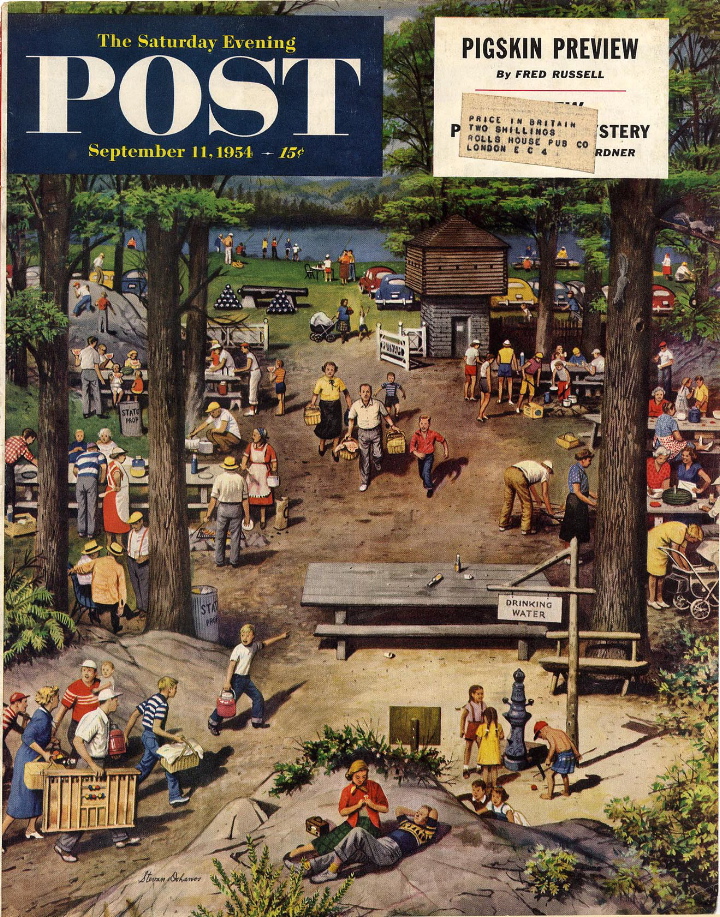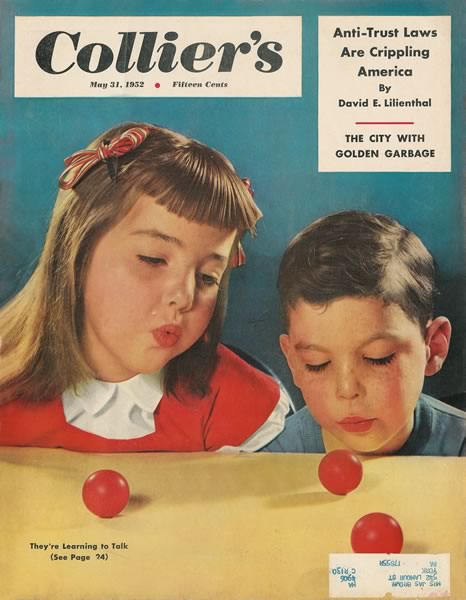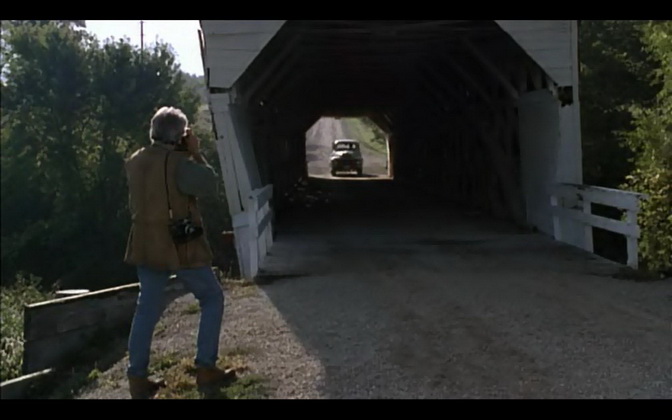From the Chicago Reader (June 23, 1995). — J.R.
It’s amazing what an Oscar can do. Clint Eastwood’s career as a filmmaker was viewed by many as a cranky, uneven enterprise until he was anointed by the academy for Unforgiven. Now it’s clear that in many quarters he can do no wrong, even though A Perfect World and The Bridges of Madison County show no particular improvement in his work. (For starters, both films are longer than they need to be.) His skill in realizing and giving shape to the scripts of others is sometimes praised so highly it’s as if people thought the movie had emerged full-blown from his Zeus-like head. Whatever the achievements of The Bridges of Madison County (and they aren’t to be sneezed at), there’s a strong temptation to credit Eastwood with resuscitating the star system, the Hollywood tearjerker, and classical mise en scene (as I’ve done in my own capsule review). Yet at best he’s performing yeoman service on a so-so adaptation of a lousy novel, plunking his customary persona in the middle of it as if that were all it needed to achieve greatness.
Let’s face it, the danger of the star system is that it’s predicated to some degree on a blind worship of power; we’re encouraged to rationalize imperfections, slide over contradictions, and go with the oceanic flow. And when the star in question is wearing more hats, as producer-director, one has to ask whether this mythicizing is simply being encouraged. When we applaud the director for his supposedly untrammeled artistry, aren’t we responding in part to the power of the star’s persona rather than to Eastwood himself?
If we look at Charlie Chaplin — the best-known star persona in the world from the teens through much of the 30s — we initially see a one-hat auteur devoted to showing himself off, then a more complex, conscience-stricken writer-director-producer who’s increasingly preoccupied with reflecting upon and ultimately questioning and undermining aspects of his own charisma. After making his tramp figure even more universally beloved than Mickey Mouse, Chaplin transformed his star persona into Hitler (The Great Dictator), a calculating bourgeois bluebeard capitalizing on his sex appeal (Monsieur Verdoux), an alcoholic failure (Limelight), and then, after being barred from reentering the U.S. in 1952, deposed royalty (A King in New York) — all of which complicated or diminished his status as a cherished love object.
If we look at stars who never functioned as directors or writers, such as James Dean or Marilyn Monroe (Monroe functioned as a producer only once, on The Prince and the Showgirl), we see a form of rebellious self-assertion that’s rather different from Chaplin’s. Monroe’s Lorelei Lee in Gentlemen Prefer Blondes, created just before she became a star, has certain parallels with Chaplin’s Verdoux, but the canvas containing her charismatic predator is ultimately controlled by Howard Hawks and the executive brass at 20th Century-Fox.
Chaplin remained his own boss, and Monroe and Dean were at least partial collaborators in the creation of their own star personas. But Eastwood seems to have been mainly the passive recipient of his persona, having starred in three Sergio Leone westerns in the mid-60s as the Man With No Name and then being introduced as Dirty Harry by director Don Siegel, his second mentor, in the early 70s. Siegel also directed Eastwood in other pictures, including his first art movie, the underrated The Beguiled (1971) — released the same year as Dirty Harry and Eastwood’s first feature as a director, Play Misty for Me — and probably had an even greater influence on Eastwood’s directorial career than Leone had on his acting career.
The Man With No Name was a man of few words, and the same could be said for Eastwood’s work as a filmmaker, insofar as he has never become a screenwriter; he remains a producer who develops, supervises, shapes, and then directs the scripts of others. This places him in a somewhat ambiguous position as both a so-called auteur (at the mercy of the material he receives) and as a star (at the mercy of a persona not of his own making), especially when these two positions are combined in the same picture. In at least two such pictures — The Dead Pool (1988), the last of the Dirty Harrys, which he produced but didn’t direct, and White Hunter, Black Heart (1990) — one finds him, like Chaplin, critiquing aspects of his star image, with varying degrees of success. The Dead Pool is a commercial chore he was required to perform by Warners in order to make Bird, and one can deduce his lack of enthusiasm for the project from references in the dialogue to the sickness of media exploitation of violence — the basis for the enormous success of the Dirty Harry cycle. Unfortunately, this did not make the film an attack on or send-up of the Dirty Harry movies, only a lackluster version of one that was obscurely turned against itself. (Eastwood evidently learned his lesson, because his next exploitation of sicko violence, which he took the trouble to direct himself — The Rookie (1990), made so that Warners would allow him to make White Hunter, Black Heart — carries no such disclaimers.) Much more successful artistically — and much less successful commercially — was his critique of John Huston and movie macho in general in White Hunter, Black Heart, which entailed what may well have been Eastwood’s riskiest performance to date in its ridiculing of the kind of male-fantasy power trips that made most of his other movies so popular.
Recently Eastwood stopped alternating between making movies for the studio and turning out chancier efforts for himself and started trying to combine these conflicting endeavors. This has involved scaling down his 30-year-old star persona, rather than critiquing or dismantling it, and experimenting with new kinds of material (perhaps significantly, his two most recent pictures have both been set during the 60s). In A Perfect World most of the star emphasis was put on Kevin Costner, and Dirty Harry was turned into a sadder-but-wiser father figure. In The Bridges of Madison County Eastwood has attempted something similar by allowing Meryl Streep to occupy the center of the movie and making himself a dream-boat version of the Man With No Name — the sort of mythic figure who turns up in town, changes history, and then rides off again.
A friend informed me that she took The Bridges of Madison County seriously for roughly the first 75 minutes, then “lost it” when she heard Meryl Streep’s narration on the sound track: “I was lying [in the bathtub] where the water had been running down his body, and that seemed to me intensely erotic.” Another friend told me he and his wife found the whole thing utterly phony — Eastwood, Streep, script, direction — while several others bought most of the package. None of these responses corresponded precisely with mine, but a second look at the movie convinced me that the false and the genuine rub shoulders on a fairly regular basis, which could account for such a diversity of opinion.
I can accept and even admire the picture as a progressive Republican defense of adultery, in which adultery is seen as a practical means of keeping certain families together. But I have a much rougher time accepting the picture’s truth or falsity moment by moment. Some of this problem is ascribable to Eastwood’s limitations, some of it to the script by Richard LaGravenese, whose other scripts — including The Fisher King, Unstrung Heroes (recently shown in Cannes), and even A Little Princess — have a disconcerting tendency to oscillate between the genuine and the artificial.
I tend to prefer everything in the movie leading up to and including the first physical contact between Streep and Eastwood to just about everything that comes after it. Why? Because the long prelude to the brief affair between Francesca Johnson, an Italian-American housewife and mother in rural Iowa, and Robert Kincaid, a photographer for National Geographic, consists of subtle inflections of the everyday, while the remainder of the film leaps between ellipses and platitudes, both convenient ways to avoid explaining what actually happens between Francesca and Robert, sexually and emotionally. (Here are two platitudes that come in swift succession: “We are the choices that we have made, Robert.” And “I’ll only say this once, and I’ve never said it before: this kind of certainty comes but once in a lifetime,” which figures as Eastwood’s highly implausible exit line.) But I could readily understand someone else responding to these platitudes and balking at the scenes I took seriously.
Take the grown children of Francesca, Michael (Victor Slezak) and Caroline (Annie Corley), returning home as the film opens to deal with their mother’s final wishes and posthumous confession, and returning periodically between the flashback installments to ruminate on the state of their own marriages. A lot of people I know simply reject these characters and scenes as badly written and acted, and though I can certainly see what they mean — and am even reminded of the embarrassing, equally starless family scenes at the beginning of Chaplin’s Verdoux — I think the problem goes much deeper than casting choices or dialogue. Ultimately it points to a limitation some might argue Eastwood shares with Chaplin — an inability to deal adequately with more than one character in any of his films.
As critic Bill Krohn recently put it, “The Bridges of Madison County is a melodrama in the tradition of Douglas Sirk and Leo McCarey, but whereas the films of those directors weave (in Serge Daney’s words) a network of characters, and the spectator identifies not with one character, but with that network, in Bridges there is really only one character,” Francesca, and “the other characters serve as surrogates for the audience.” (One might argue that Kevin Costner’s runaway convict in A Perfect World is similarly the only real character in that film, which functions as a showcase for Costner much as Bridges serves as a showcase for Streep.)
Whether one can accept Michael and Caroline as audience surrogates depends on whether one can accept Robert Kincaid on any level. All three characters are standard soap-opera figures without much shading or detail; to try to imagine their lives beyond the events shown in the film is to stare into a void. And as beautifully textured and detailed as Streep’s performance is — obviously assisted by LaGravenese’s writing — one might argue that it’s limited at every turn because it’s surrounded by a void. (One reason Robert functions as an audience surrogate is that the Eastwood persona belongs to the audience; it was nurtured and preserved by their responses to his previous features rather than by his own predilections, which seem to figure more in his work as a producer and director.) Apart from the arguable issue of whether Eastwood is too old to play Robert, his mythical status rubs uneasily against Francesca’s status as a relatively three-dimensional character. It’s almost as if she falls in love with a ghost.
The film also has a more covert subtext I’m less certain about. Here too I’m ignoring the issue of whether the original Robert James Waller novel, which I haven’t read, has the same ideological focus.
The four-day affair between Francesca and Robert — more precisely a three-day affair preceded by a day of uneasy courtship — takes place during the summer of 1965. This is the same summer as the Watts riot in Los Angeles, and only a few months after the assassination of Malcolm X and the famous Montgomery march led by Martin Luther King from Selma. Of course none of these things is mentioned in the movie. Given the concerns of the characters there’s no particular reason they should be, but given all the references to Robert’s adventures in Africa and all the jazz that’s heard — either on a Chicago jazz station or in a black roadside club where the two go when their affair is in full swing — one begins to wonder whether such omissions are entirely innocent, even if they’re unconscious.
When these details are examined it becomes obvious that the significations of both Africa and jazz are nearly all tied to sex, and one thing that makes these details stand out is the film’s extremely chaste handling of the sex between the couple. During their first evening together Robert entertains Francesca with a tale of a female gorilla that was sexually attracted to him (“We became engaged….we still write”), and she responds with gales of laughter — all while Ahmad Jamal’s “Poinciana” is heard over the radio (at another point Robert expounds on the predatory and sensual aspects of Africa). The next night Johnny Hartman’s “I See Your Face Before Me” comes over the radio; this is the first time the radio jazz is so prominent on the sound track that it seems to be coming out of the spectator’s head, and the couple’s mutual seduction, including their slow dancing, is choreographed to it. The following day Francesca looks at Robert’s photographs of Africans and suggests that he’s really an artist and should have them published, and that night we find them hiding out in another county at the Blue Note, where all the other customers are black and where the sweaty jazz combo is overtaken on the sound track by Hartman’s “For All We Know” just before they start to dance again; the song continues over their lovemaking in the extreme darkness of what one presumes is a nearby motel or roadhouse.
As a jazz buff, I certainly can’t object to any use of the music that suggests sensual awakening; indeed, any good linguist can tell you that one of the original meanings of the word “jazz” was “sex.” And I suppose the references to Africa could be justified in plenty of other ways; the gorilla gags might be allusions to Eastwood’s appearances in Every Which Way but Loose and Any Which Way You Can, and one could trace the jazz back to Bird and the allusions to Africa back to White Hunter, Black Heart.
What seems more pertinent, however, is the effective appeal made by The Bridges of Madison County to nostalgia of various kinds. I’m thinking of nostalgia for the natural beauty of the rural midwest, nostalgia for smoking unfiltered Camels without fear of censure, nostalgia for old-fashioned love stories, for melodramatic scenes that take place in the driving rain, for romantic jazz, for star performances, for middle-aged passion, for pickup trucks and tractors, for state fairs, for country kitchens, for print dresses, for covered bridges, for slow lap dissolves, even for slow movies in general. And somewhere in this configuration is a nostalgia for the dreams of an all-white America that used to be found on the covers of magazines like the Saturday Evening Post and Collier’s. In this context all that jazz and African jive in The Bridges of Madison County sounds like the return of the repressed.








